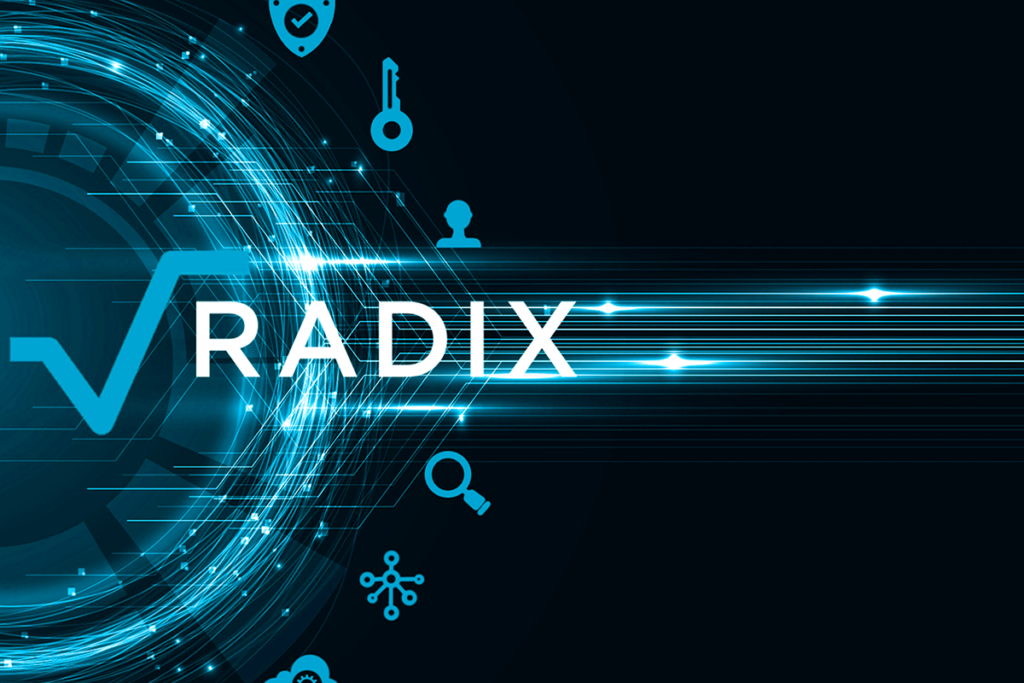Radix Crypto, a prominent public project with a primary focus on decentralized finance (DeFi) use cases and dedicated support for the advancement of these innovative applications, has embarked on a mission to offer theoretically boundless linear scalability. This ambitious goal is realized through the implementation of their novel consensus algorithm known as Cerberus, which introduces sharded and atomically composable features to enhance security. In addition to this, Radix boasts its proprietary smart contract execution environment, Radix Engine, designed to accelerate and safeguard the development of Web3 and DeFi by providing a rich set of functionalities for an array of new assets.
What is Radix Crypto?
At its core, Radix aims to establish itself as a fundamental layer for DeFi applications, akin to established blockchains like Ethereum. To facilitate its ecosystem, Radix has introduced its native token, XRD, which empowers holders to actively engage in the network’s Proof-of-Stake (PoS) consensus mechanism and, in return, earn rewards through inflation.
The brainchild behind Radix, Dan Hughes, initially discovered Bitcoin in 2012. With a background deeply rooted in telecommunications technology development, he quickly grasped the profound implications of blockchain technology on the global financial landscape and beyond. After a year of intensive research into Bitcoin, he launched eMunie, later rebranded as Radix tokens, on the Bitcointalk forum in May 2013. Over the subsequent five years, Dan Hughes concentrated his efforts on solving one of the most pressing issues within the blockchain space: scalability.

His journey led to the invention and rigorous testing of various consensus architectures, including Blocktrees, Directed Acyclic Graphs (DAGs), Channelized Asynchronous State Trees (CAST), Tempo, and eventually Cerberus. In 2017, Piers Ridyard joined the project as CEO, additional funding was secured from notable figures such as Taavet, co-founder of TransferWise, and leading European VC firm LocalGlobe, marking a significant milestone in the project’s evolution as it was rebranded as Radix.
In December 2021, Radix introduced its smart contract programming language, Scrypto, further bolstering its development capabilities. The project saw the launch of its Olympia mainnet in July 2021, and as of February 2022, it had seen over $500 million worth of XRD tokens staked within its ecosystem. In 2020, Radix established Radix Tokens (Jersey) Limited, an organization based in Jersey (Channels Islands), responsible for issuing tokens and managing the Radix Foundation’s treasury. Andrew Jarrett serves as the CEO of RTJL.

XRD Coin Overview:
XRD stands as the native cryptocurrency within the Radix ecosystem. It provides XRD holders with the opportunity to participate in the network’s Proof-of-Stake (PoS) consensus mechanism and leverage their holdings to earn rewards through inflation.
XRD is meticulously designed as a first-layer DeFi protocol with a primary objective of offering a singular, decentralized network service. This service is tailored to allow developers to continually address vulnerabilities, swiftly respond to cybersecurity threats, and scale without encountering bottlenecks, all while being incentivized to make improvements.
The Radix Public Network, which commenced on July 28, 2021, is on a trajectory to introduce three substantial enhancements to DeFi technology over the course of the next three years.
Advantages of XRD Coin:
- It presents robust DeFi solutions, consolidating its position within the crypto market.
- XRD exhibits significant profit potential, making it an attractive investment option.
- While it carries short-term risks, XRD offers substantial potential for gains over the medium term.
- XRD boasts a high level of security, rendering it resilient against cyberattacks.
Disadvantages of XRD Coin:
- Despite its reliability, XRD has faced conflicting assessments within the crypto community.
- Like many DeFi tokens, XRD can be vulnerable to security breaches or vulnerabilities in the DeFi space.
- The market for XRD can be subject to uncertainties, leading to sharp price fluctuations.
In conclusion, Radix is at the forefront of the DeFi revolution, aiming to revolutionize the financial landscape with its innovative solutions and commitment to scalability and security. XRD, as the native token, plays a pivotal role in the ecosystem, offering both utility and investment opportunities for crypto enthusiasts and investors. However, like all cryptocurrencies, XRD carries its own set of advantages and disadvantages, making it essential for potential investors to conduct thorough research and risk assessment before participating in the Radix ecosystem.
















Leave a comment